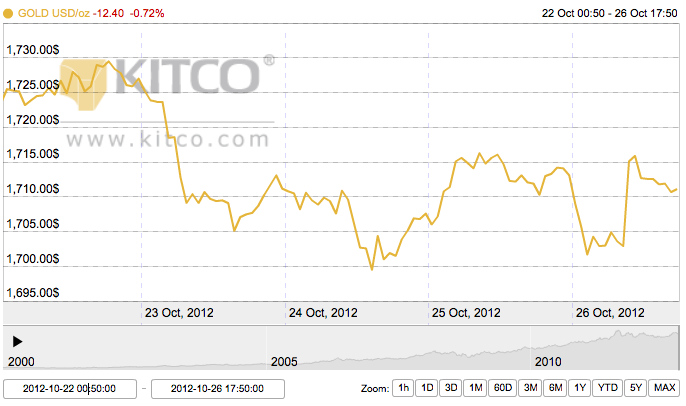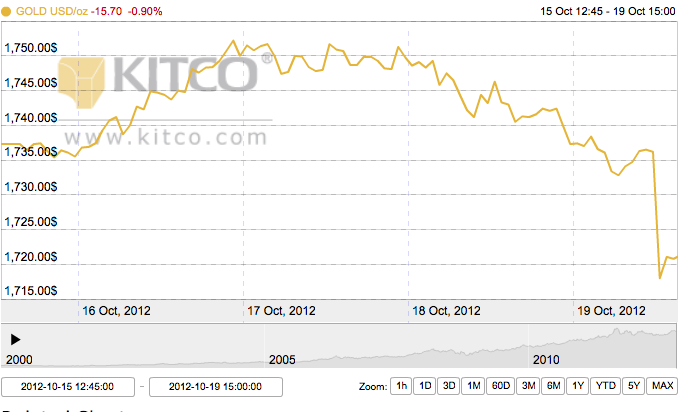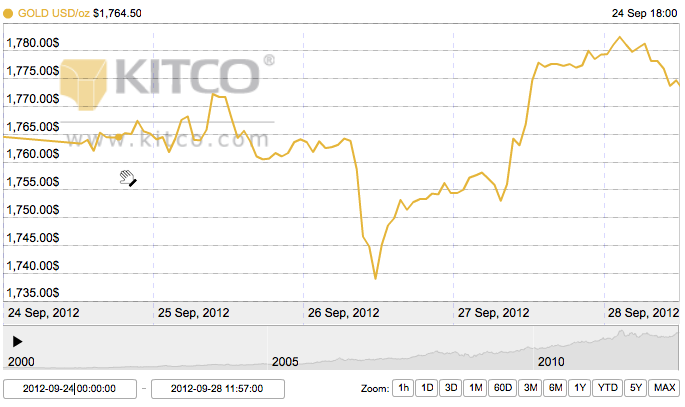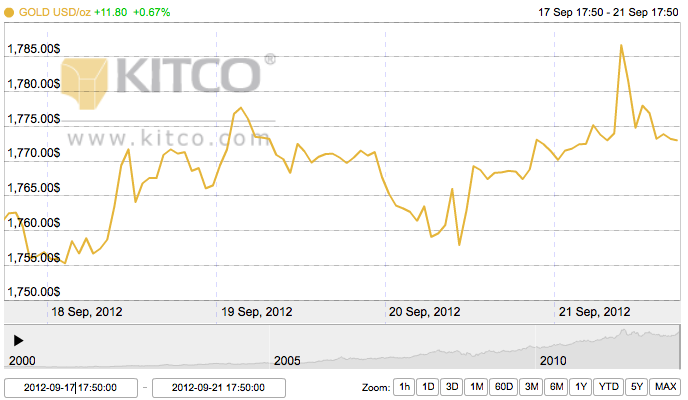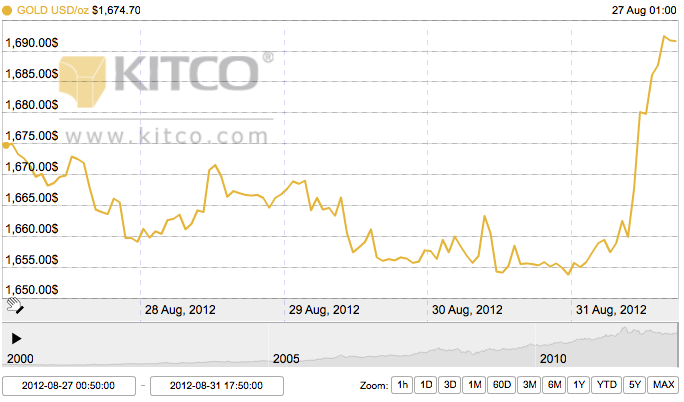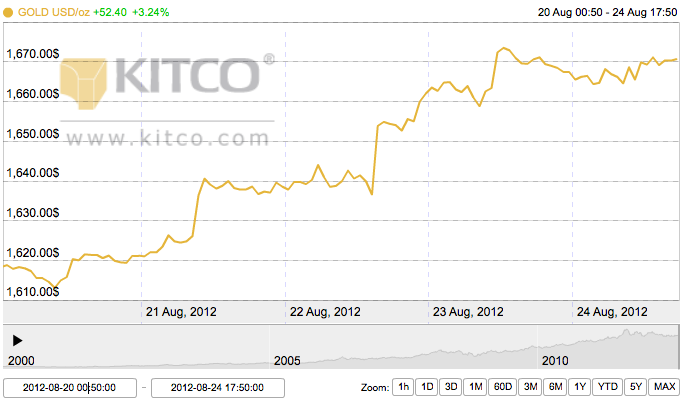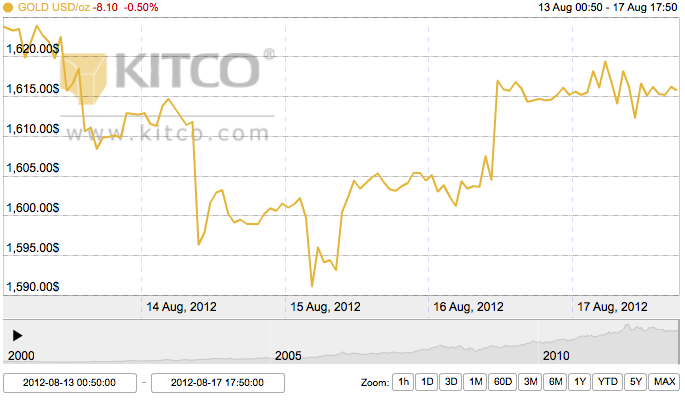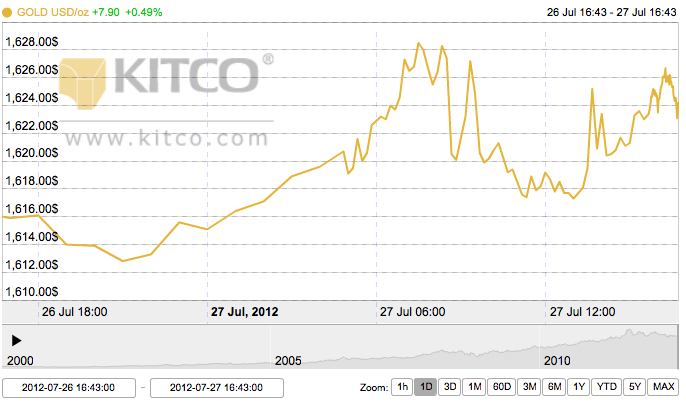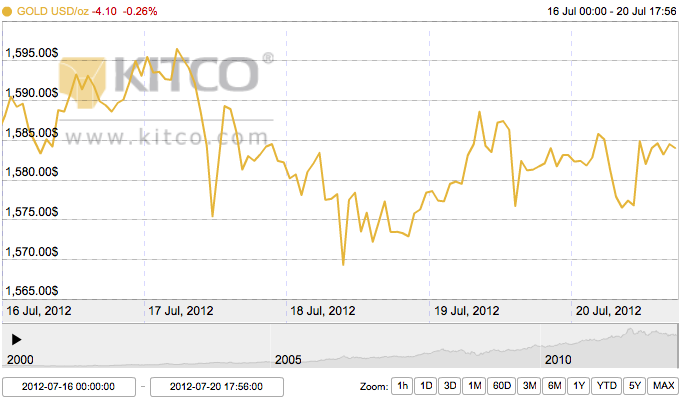Monday Open: $1,729.50
Weekly High: $1,729.50
Weekly Low: $1,699.50
Friday Close: $1,1712.00
The gold market was pretty quiet this week, taking a few ups and downs based on market pressure, a Federal Reserve meeting and continued expectations about global stimulus measures. No major price shifts occurred; instead, gold operated within a pretty stable trading range, only dipping slightly below $1,700 midweek on Fed fears, but quickly regaining to the above $1,700 range. The major news this week was a statement released by the Federal Reserve that confirmed stimulus measures but did not announce any new policies.
Monday and Tuesday’s trading were basically fear-based sell-offs anticipating the Fed’s statement, compounded by a stronger dollar and outside markets. There was not great anticipation for the Fed’s meeting minutes, and economists generally didn’t expect any fresh stimulus measures, but there was a slight fear that since the dollar has been performing well lately, the Fed could decide to pull back their monetary easing at any time.
The euro dropped Tuesday as Moody’s downgraded Spain’s credit rating once again and reports said Spain’s economy contracted .4% more than last quarter. The dollar was also trading higher on Tuesday as gold hit a new 6-week low.
Once the Fed statement was released on Wednesday, gold jumped about $7 on the news that the Fed will be continuing its economic stimulus measures. However, it dropped all the way below $1,700 a few minutes later, after people had time to read through the FOMC minutes. The Fed reiterated its plan to stick with zero percent interest rates until 2015, despite gains already perceived in the housing sector.
Thursday saw gold rise on expectations that the bank of Japan may be considering stimulus measures, a rising euro and anticipation of the wedding season in India, which begins mid-November.
Friday was a slow day in the market, characterized by risk-off trading before the weekend. France got their credit score downgraded and Greece faced fresh economic woes; the gold season has started in India; and the U.S. reported slight gains in economic growth, strengthening the dollar.
Significantly, news has been traveling that Ben Bernake would probably not be running for office as Federal Reserve chairman for another term even if President Obama is reelected. This causes some concern for gold bugs, as Bernake is central to keeping interest rates low, an asset for gold.
“Without Bernanke, monetary stimulus from the Federal Reserve could be greatly reduced, and that will weigh on the price of gold,” said Jeffrey Sica of billion-dollar investment agency SICA Wealth.
The U.S. presidential election weighs in on many traders’ buying patterns, along with the anticipation of a “fiscal cliff” as it is being called: if Congress doesn’t solidify a debt reduction plan by the end of the year, a series of automatic spending freezes and tax increases will be enacted.
